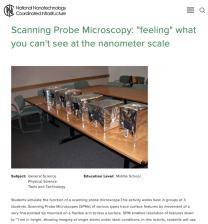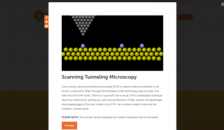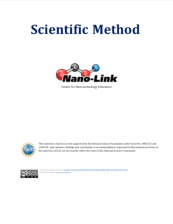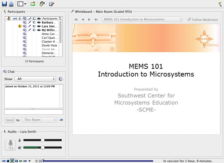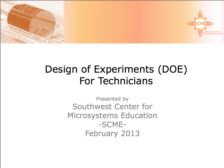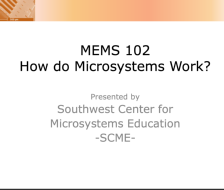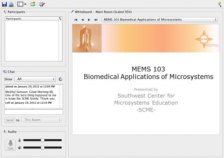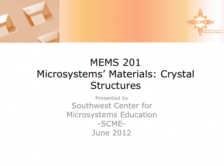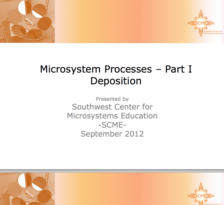Browse Resources
Resources |
|---|
Published by the National Nanotechnology Coordinated Infrastructure, this hour-long activity has students "simulate the function of a scanning probe microscope" by creating their own scanning probe microscope (SPM) boxes. The Teacher's Guide contains everything the instructor needs to carry out the...
This resource provides an introductory activity on scanning tunneling microscopy. As the module states, "a scanning tunneling microscope is a powerful tool for observing and manipulating the atomic-scale world." The activity covers concepts such as the tunneling effect, scanning the surface, two...
This page from SciDev.net contains technology articles. The page includes sections on news and features, opinions and analysis, key documents, links, and definitions of key words related to nanotechnology. Users may also limit the results by geographic area and read articles on a specific location...
Module Description:
This module was created by the Center for Nanotechnology Education (Nano-Link) and includes an activity for students to learn about and practice the scientific method. During the activity students will use cellophane fish to test various hypotheses about why and how the fish...
This MEMS 101: Introduction to Microsystems (MEMS) webinar was presented by the Southwest Center for Microsystems Education (SCME) on October 21, 2011, and is offered as an Elluminate Live! recorded Session. Presenters include Barb Lopez, Research Engineer at the University of New Mexico and...
This collection contains the presentation slides and handout that accompanied the Design of Experiments (DOE) webinar. This webinar was presented by the Southwest Center for Microsystems Education (SCME) in February of 2013. Presenters included Barbara Lopez, Research Engineer at the University of...
These presentation slides and handout are from the Webinar: MEMS 102: How do Microsystems Work, presented by the Southwest Center for Microsystems Education (SCME). This webinar compared macro and micro devices that sense, analyze, respond, and actuate. Examples of microdevices that sense, analyze,...
This MEMS 103: Biomedical Applications of Microsystems webinar was presented by the Southwest Center for Microsystems Education (SCME) on January 20, 2012 and is offered as an Elluminate Live! recorded Session. Presenters include Barb Lopez, Research Engineer at the University of New Mexico and...
These resources include presentation slides and a handout from the MEMS 201 webinar presented by the Southwest Center for Microsystems Education (SCME) on June 28, 2012. Questions covered in the webinar include: What are the differences between amorphous, single-crystal and poly-crystal solids? Why...
This collection contains the presentation slides and handout that accompanied the webinar Microsystem Process -- Part 1 Deposition. This webinar was created by the Southwest Center for Microsystems Education(SCME) and was presented on September 27, 2012. Webinar presenters included Barbara Lopez,...
|
| ← PreviousNext → |
